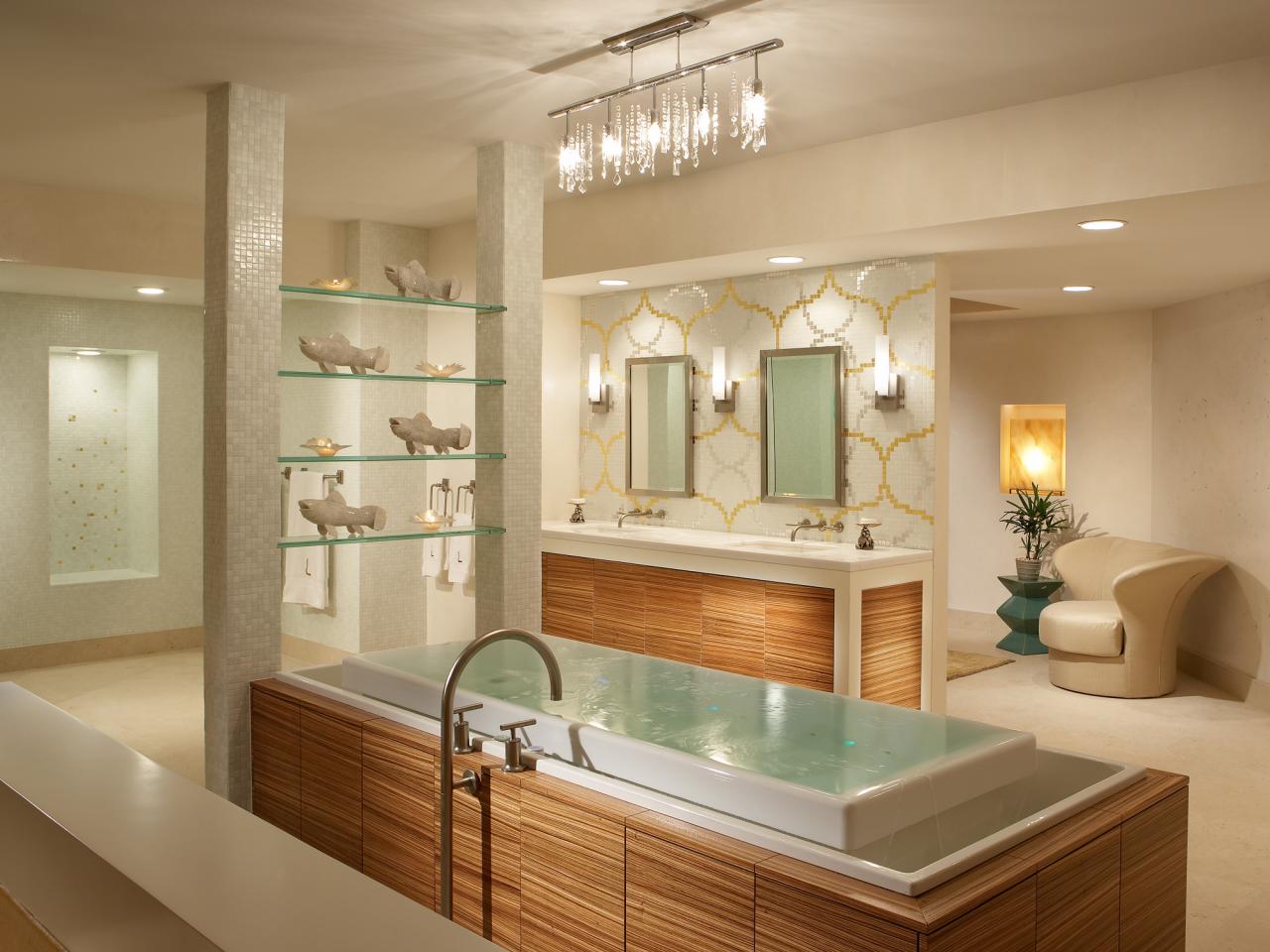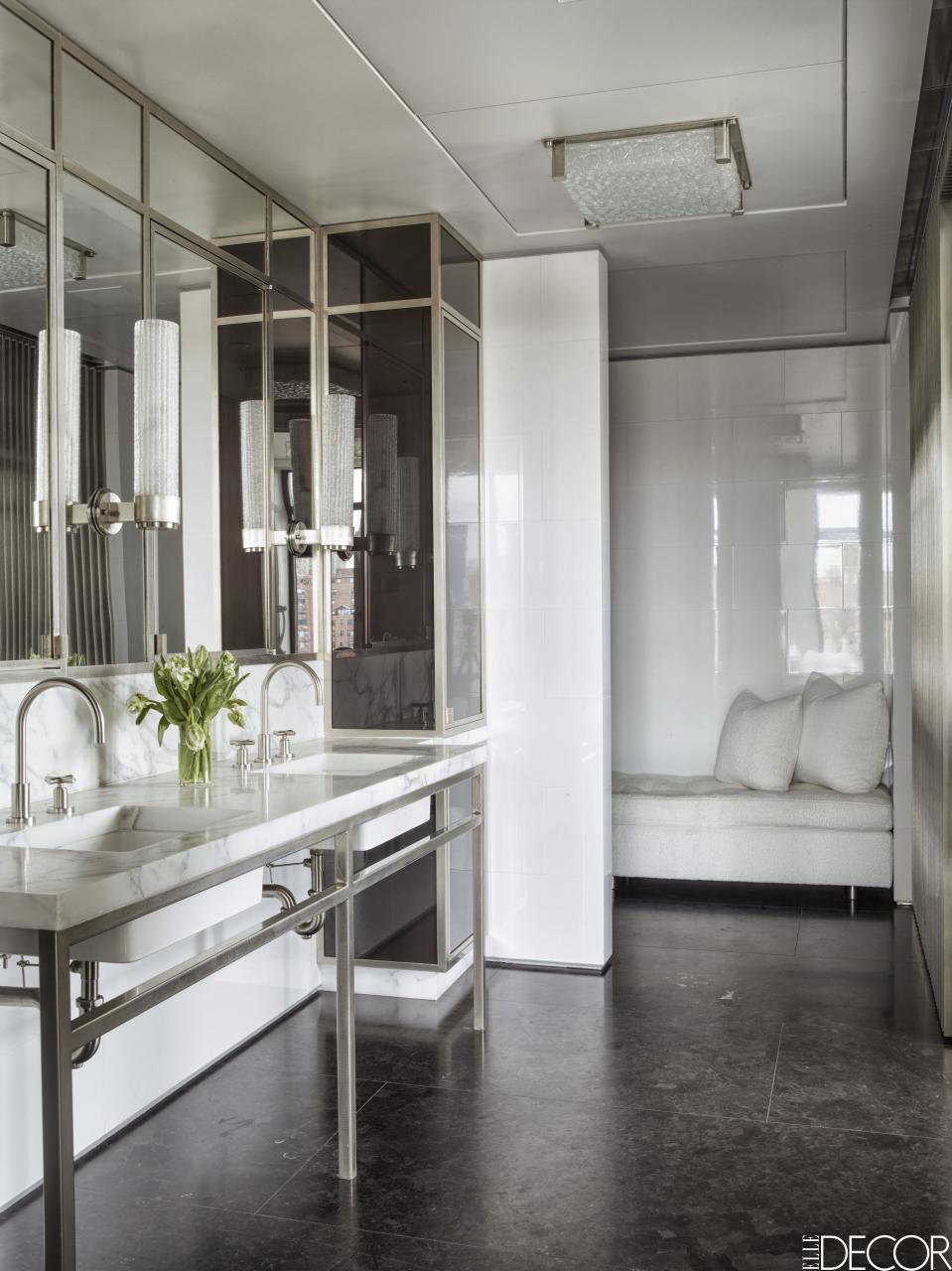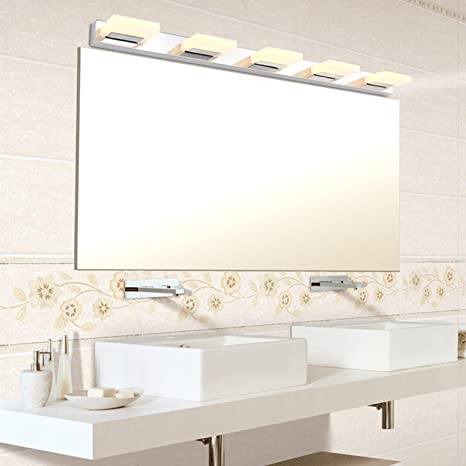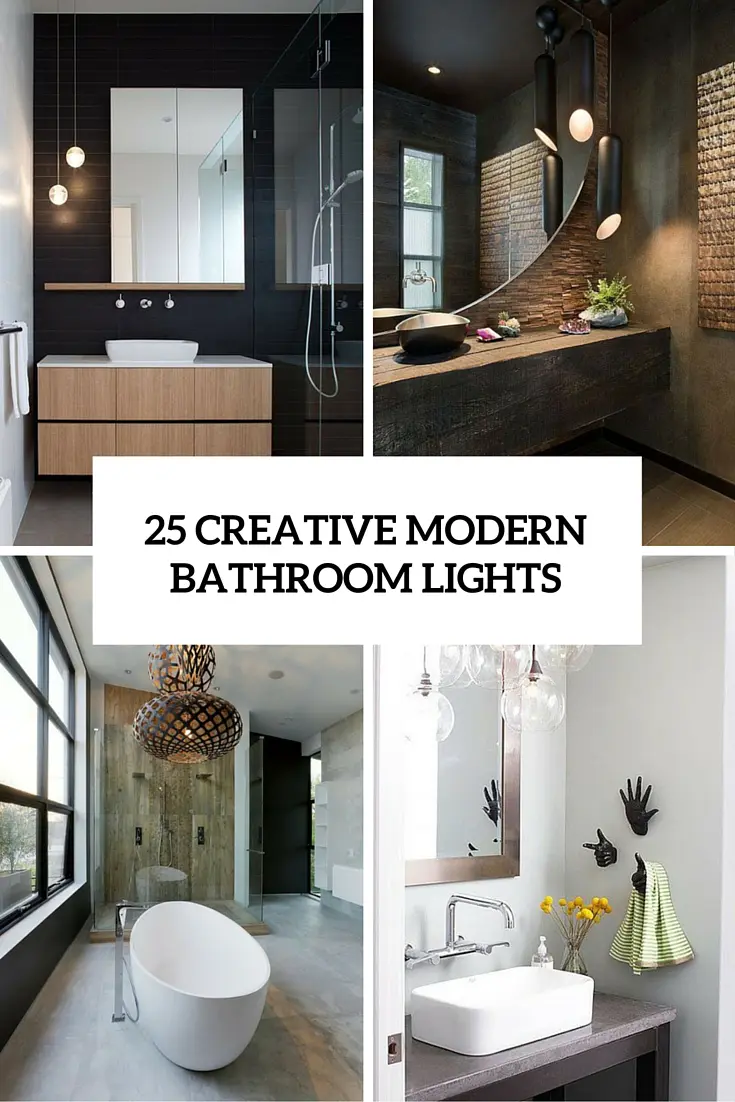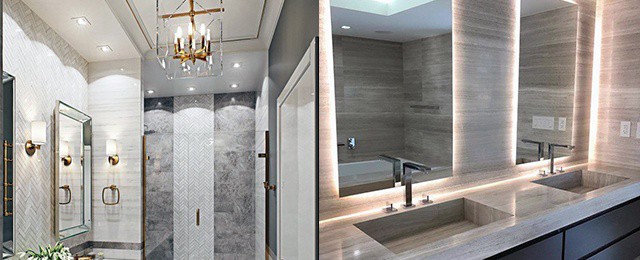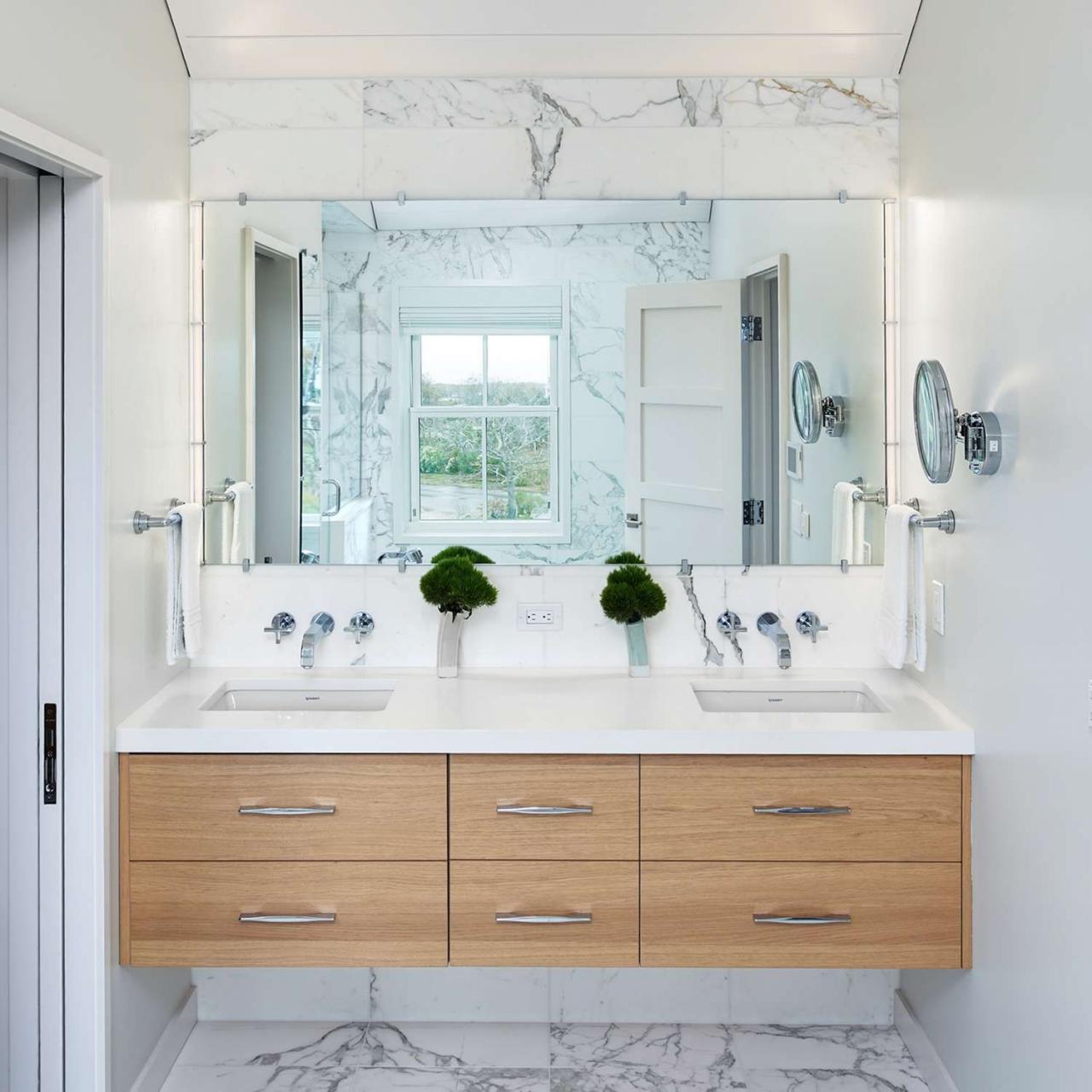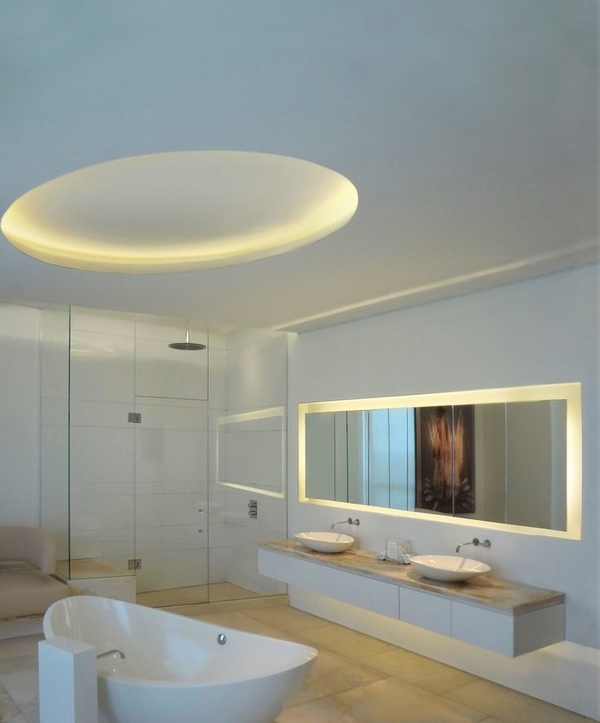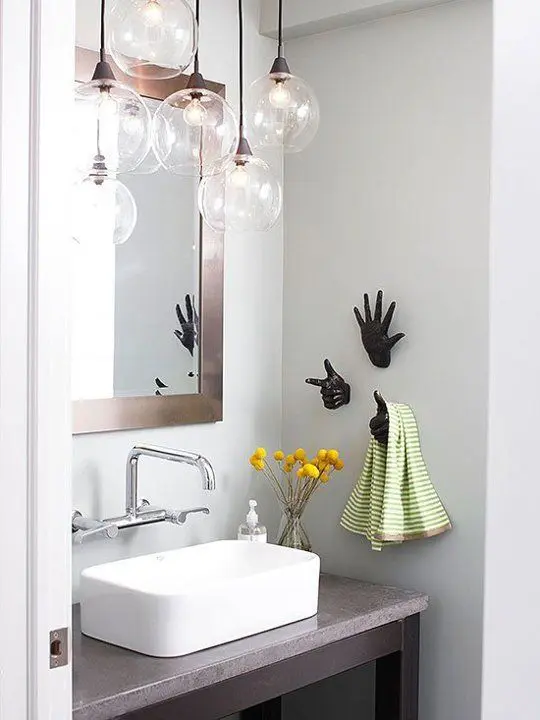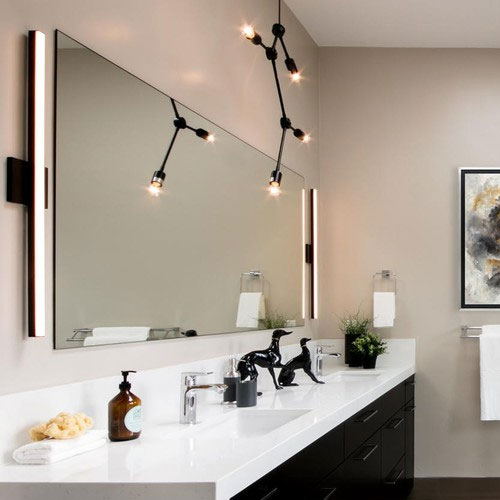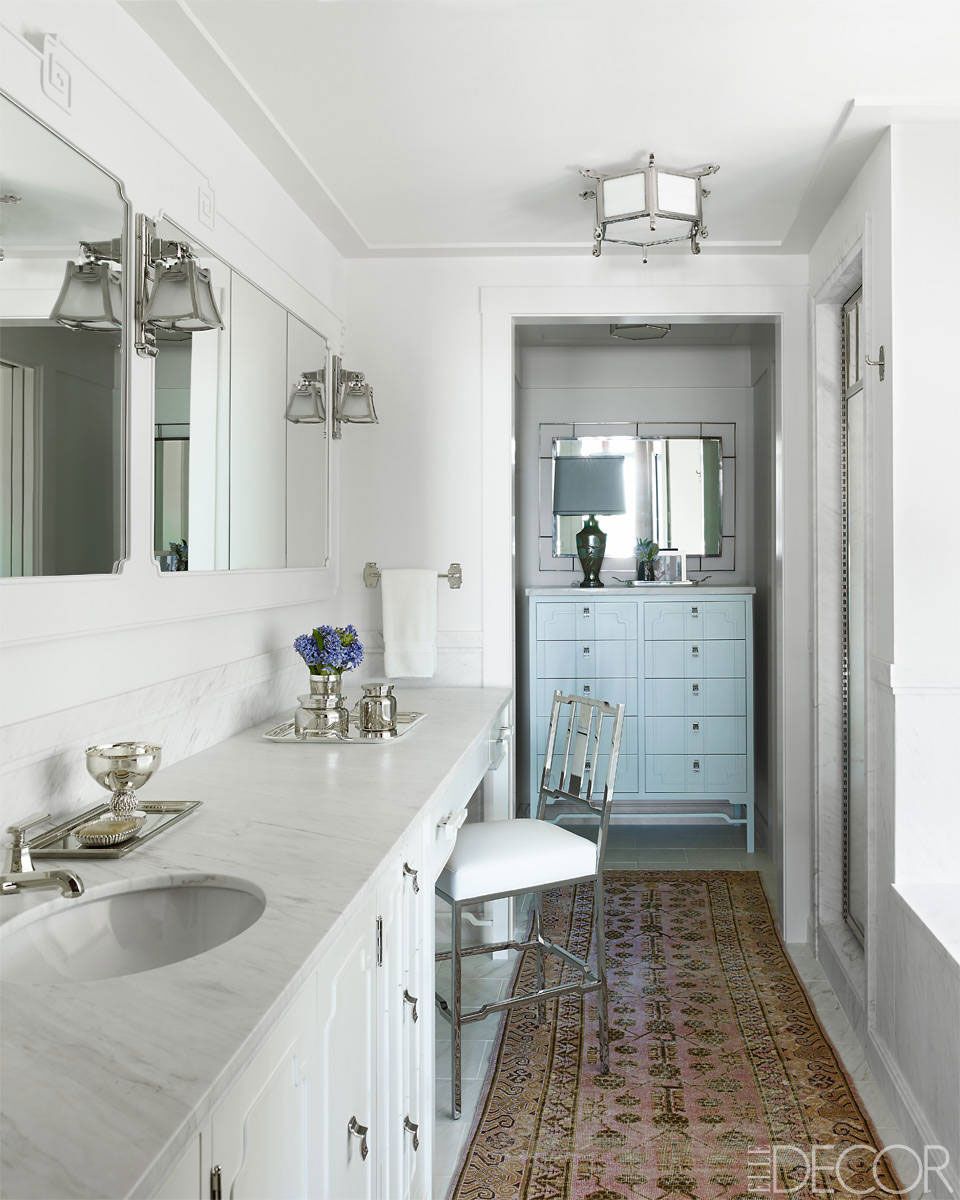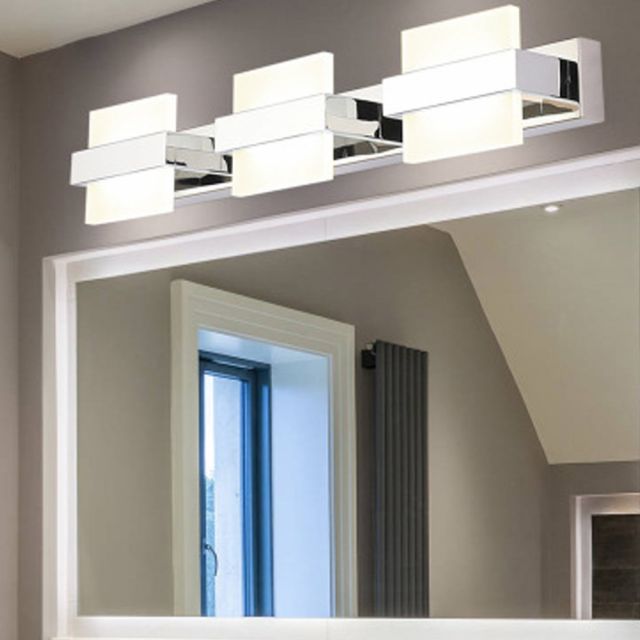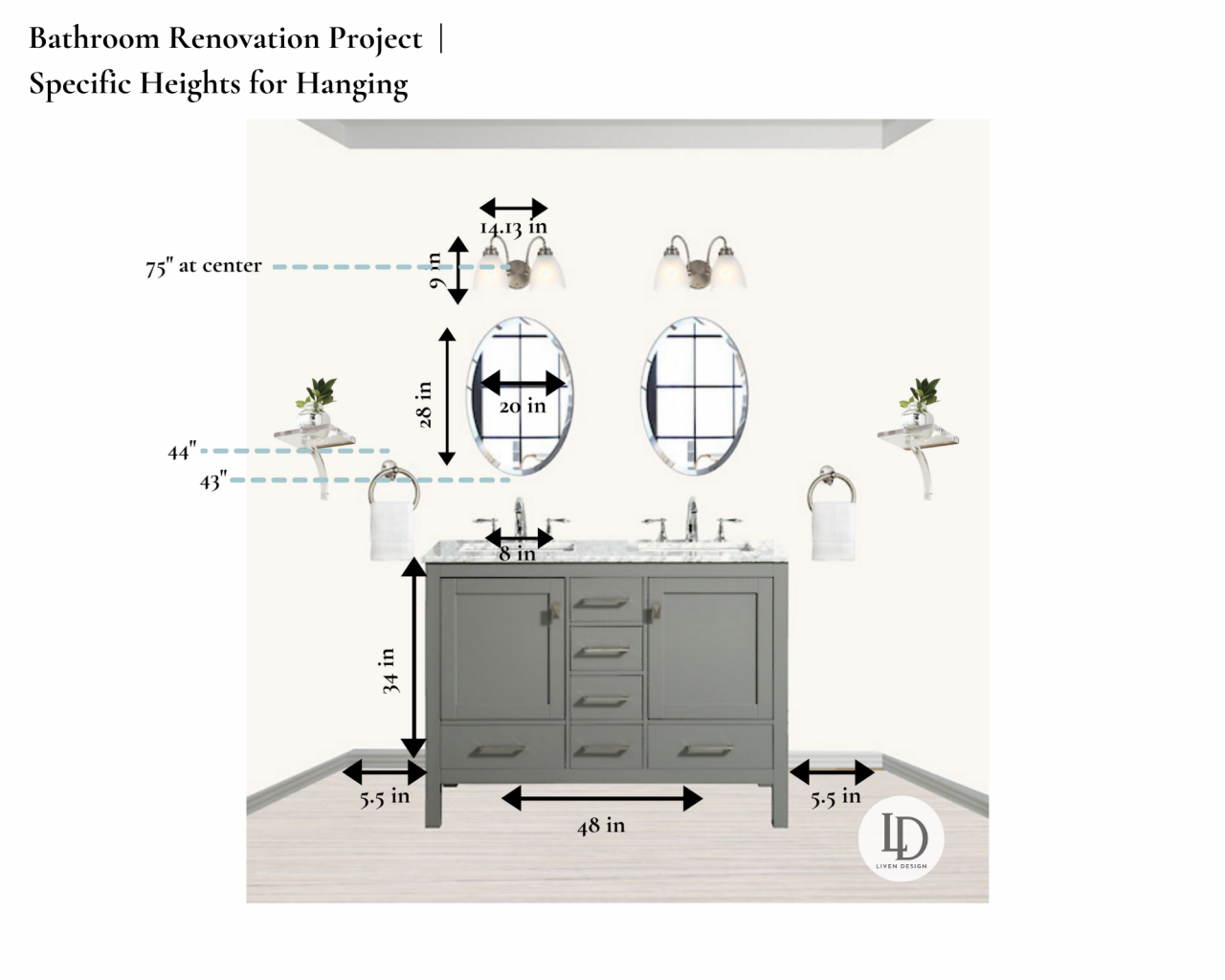Sleek Fixtures: Embracing Minimalist Elegance
In modern bathroom design, sleek fixtures are a hallmark of minimalist elegance. These fixtures not only enhance the aesthetics of the space but also offer functionality with a clean, uncluttered look. Here’s a closer look at how to incorporate sleek fixtures into your bathroom design.
- Understanding Minimalist Design: Minimalist design focuses on simplicity and functionality, eliminating unnecessary elements to create a clean and harmonious space. Sleek fixtures embody this philosophy by featuring clean lines, understated forms, and a lack of ornate detailing. When choosing fixtures, look for those with a streamlined silhouette that complements the overall minimalist aesthetic.
- Choosing the Right Fixtures: For a modern bathroom, consider fixtures made from materials like polished chrome, matte black, or brushed nickel. These finishes provide a contemporary look while remaining versatile enough to match various color schemes. Opt for fixtures with a simple geometric design, such as rectangular or cylindrical shapes, to maintain a cohesive minimalist theme.
- Lighting Fixtures: In a minimalist bathroom, lighting fixtures should be as unobtrusive as they are functional. Recessed lighting, wall sconces with clean lines, or slim linear LED lights can provide adequate illumination without overwhelming the space. These types of fixtures blend seamlessly into the design while ensuring that the bathroom remains well-lit.
- Faucets and Showerheads: Sleek faucets and showerheads are essential for maintaining a minimalist bathroom design. Look for models with a single handle or touchless operation for a modern touch. Wall-mounted faucets and showerheads with a streamlined design can also help reduce clutter and enhance the room’s sleek appearance.
- Mirrors with Integrated Lighting: Mirrors with built-in lighting are a practical addition to a minimalist bathroom. These mirrors eliminate the need for separate light fixtures, providing both illumination and a sleek, space-saving design. Choose mirrors with a slim profile and integrated LED lighting for a modern look that complements the minimalist theme.
- Hardware and Accessories: Even the smallest details contribute to the overall minimalist aesthetic. Choose hardware and accessories like towel bars, robe hooks, and cabinet handles that are simple and streamlined. Avoid overly decorative elements and opt for pieces with clean lines and modern finishes to maintain a cohesive look throughout the bathroom.
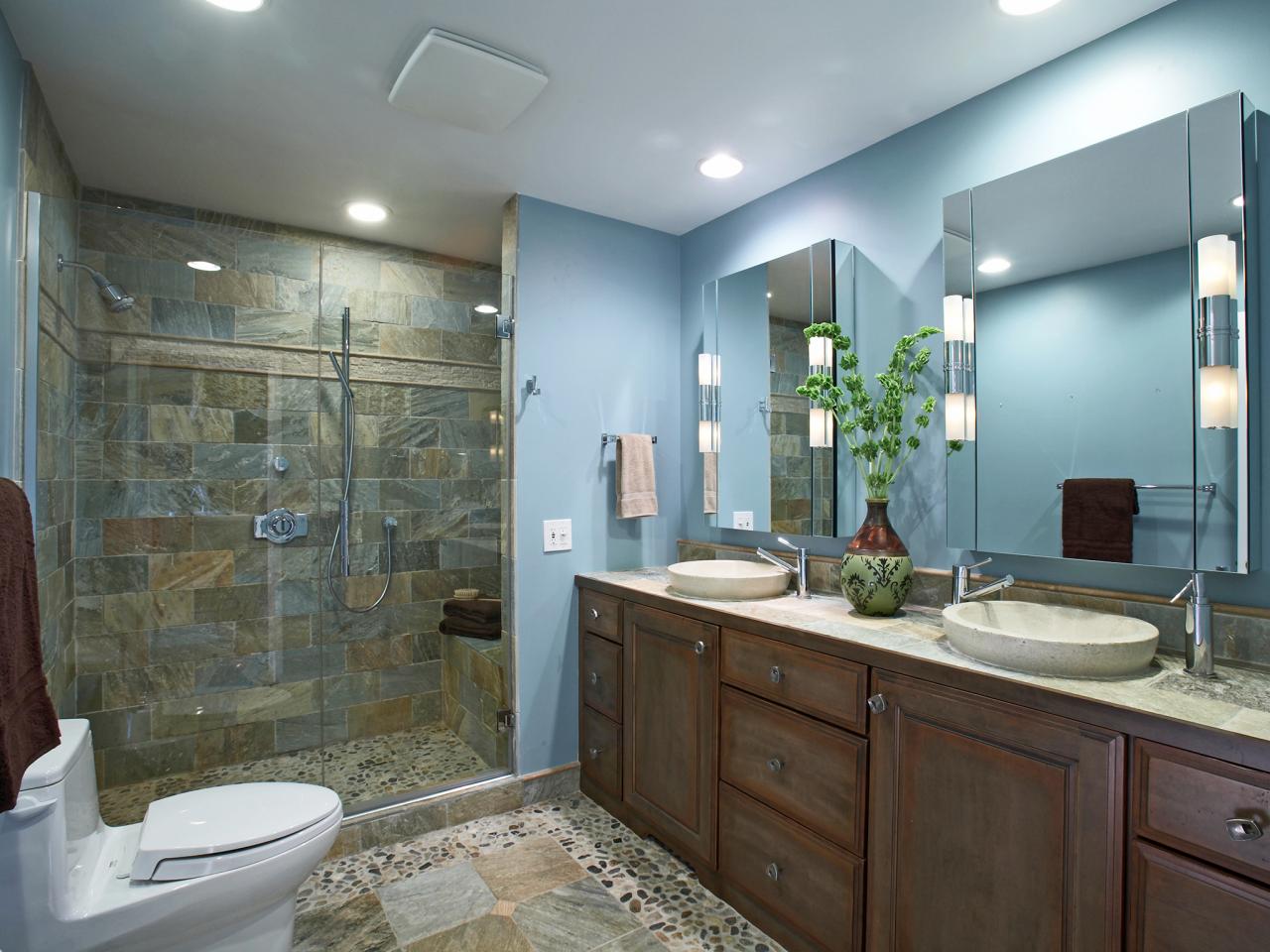
Layered Lighting: Combining Ambient, Task, and Accent Illumination
Layered lighting is a key component of modern bathroom design, providing a dynamic and functional approach to illumination. By combining ambient, task, and accent lighting, you can create a well-balanced and versatile lighting scheme that enhances both the style and functionality of your bathroom.
Understanding Layered Lighting: Layered lighting involves using multiple sources of light to achieve a balanced and adaptable illumination scheme. The three main layers—ambient, task, and accent—work together to provide general illumination, focused lighting for specific tasks, and visual interest, respectively. This approach ensures that your bathroom is both stylish and functional.
Ambient Lighting: Ambient lighting provides the primary source of illumination in a bathroom, ensuring that the space is well-lit and comfortable. Common options for ambient lighting include overhead ceiling fixtures, recessed lights, or flush-mounted fixtures. Choose fixtures with a diffuse light source to avoid harsh shadows and create a soft, even glow.
Task Lighting: Task lighting focuses on specific areas where detailed work is performed, such as the vanity or shower. Vanity lighting should be placed on either side of the mirror or above it to provide even illumination for grooming tasks. In the shower area, consider installing adjustable recessed lights or wall-mounted fixtures to provide focused lighting where it’s needed most.
Accent Lighting: Accent lighting adds visual interest and highlights architectural or decorative features in the bathroom. Consider using LED strip lights or wall sconces to accentuate features such as a feature wall, artwork, or architectural details. Accent lighting can also be used to create a relaxing ambiance by highlighting certain areas of the bathroom.
Creating Balance: To achieve a harmonious lighting scheme, balance the three layers of lighting throughout the bathroom. Ensure that ambient lighting provides enough coverage for the entire space, while task lighting is strategically placed where it’s needed. Use accent lighting sparingly to create focal points and enhance the overall design.
Adjustable Options: Incorporating dimmable or adjustable lighting options allows you to tailor the lighting to different activities and moods. Dimmer switches or smart lighting systems enable you to control the intensity of the light and create a variety of atmospheres, from bright and functional to soft and relaxing.
Smart Lighting: Integrating Technology for Convenience and Efficiency
Smart lighting is revolutionizing modern bathroom design by integrating technology to enhance convenience, efficiency, and control. With features that allow you to customize your lighting experience, smart lighting offers a range of benefits for contemporary bathrooms.
Introduction to Smart Lighting: Smart lighting systems use technology to offer advanced features such as remote control, scheduling, and automation. These systems can be controlled via smartphone apps, voice commands, or smart home hubs, making it easier to manage your bathroom lighting from anywhere.
Voice Control: Voice-controlled lighting systems allow you to adjust the brightness, color, and on/off settings using voice commands. Integration with virtual assistants like Amazon Alexa or Google Assistant provides hands-free convenience, enabling you to control your bathroom lights without physically interacting with switches or apps.
Customizable Lighting Scenes: Smart lighting systems offer the ability to create and save custom lighting scenes for different activities and moods. For example, you can program a bright, cool light setting for morning routines and a softer, warmer setting for relaxing baths. These scenes can be activated with a single command, enhancing both functionality and ambiance.
Scheduling and Automation: Smart lighting systems allow you to set schedules and automate lighting based on your daily routines. For instance, you can program the lights to gradually brighten in the morning to simulate a sunrise or have them automatically turn off at night. This feature not only adds convenience but also helps improve energy efficiency.
Energy Efficiency: Smart lighting options often include LED technology, which is more energy-efficient than traditional incandescent bulbs. Additionally, smart systems can provide usage statistics and notifications, helping you monitor and reduce energy consumption. This contributes to a more sustainable and cost-effective bathroom lighting solution.
Integration with Other Smart Devices: Smart lighting can be integrated with other smart home devices for a seamless experience. For example, you can synchronize your bathroom lights with a smart thermostat to adjust the lighting based on room temperature or use motion sensors to activate lights when someone enters the bathroom.
Statement Mirrors: Illuminating with Style and Functionality
Statement mirrors are a stylish and functional addition to modern bathrooms, combining aesthetic appeal with practical illumination. These mirrors not only serve as focal points but also enhance the lighting and functionality of the space. Here’s how to make the most of statement mirrors in your bathroom design.
The Role of Statement Mirrors: Statement mirrors act as both a decorative element and a practical feature in the bathroom. They can create a visual centerpiece, add a touch of luxury, and improve the overall lighting and functionality of the space. Choosing the right statement mirror can elevate the bathroom’s design while serving essential lighting needs.
Integrated Lighting: Many statement mirrors come with built-in lighting, which provides both illumination and a sleek, modern look. LED lights can be integrated around the mirror’s perimeter or within the mirror itself, offering even and shadow-free lighting for grooming tasks. This feature eliminates the need for separate light fixtures, contributing to a cleaner and more streamlined design.
Design and Shape: The design and shape of the statement mirror should complement the bathroom’s overall style. Opt for mirrors with unique shapes, such as oval, round, or geometric forms, to create a focal point. The frame of the mirror can also enhance its visual impact—choose from materials like chrome, brass, or wood to match your bathroom’s decor.
Size and Placement: The size of the statement mirror should be proportionate to the bathroom space. A large mirror can make a small bathroom appear more expansive, while a smaller mirror may be more suitable for a compact space. Place the mirror at eye level for optimal functionality and ensure it is well-positioned to reflect light and create a balanced look.
Enhancing the Ambiance: Statement mirrors can be used to enhance the bathroom’s ambiance by reflecting light and adding depth to the space. Position the mirror to reflect natural light from windows or incorporate additional lighting sources to create a bright and inviting atmosphere. The mirror’s design can also contribute to the room’s overall style, from modern and sleek to vintage and ornate.
Practical Considerations: When choosing a statement mirror, consider practical aspects such as ease of cleaning and durability. Mirrors with easy-to-clean surfaces and moisture-resistant frames are ideal for the bathroom environment. Ensure that the mirror is securely mounted and that any integrated lighting is properly installed to avoid maintenance issues.
Architectural Lighting: Enhancing Bathroom Features with Design
Architectural lighting focuses on highlighting and enhancing the structural and design elements of a bathroom. By integrating lighting into architectural features, you can create a sophisticated and visually appealing space. Here’s how to use architectural lighting to elevate your bathroom design.
Understanding Architectural Lighting: Architectural lighting involves using lighting to emphasize the architectural features and design elements of a space. This type of lighting can highlight elements such as alcoves, niches, and textured walls, adding depth and interest to the bathroom. The goal is to create a cohesive design that complements the room’s structure.
Recessed Lighting: Recessed lighting, or can lighting, is an effective way to highlight architectural features without adding visual clutter. Install recessed lights in the ceiling to wash light over walls or accentuate specific areas such as a feature wall or artwork. Recessed lighting can also be used to create a soft, ambient glow around the perimeter of the room.
Cove Lighting: Cove lighting involves placing light fixtures in a ledge or recess to cast a soft, indirect glow onto the ceiling or walls. This type of lighting can enhance architectural details and create a warm, inviting ambiance. Cove lighting is ideal for highlighting crown molding, architectural alcoves, or creating a subtle backlighting effect.
Wall Sconces: Wall sconces can be used to accentuate architectural features such as columns, textured walls, or built-in shelves. Choose sconces with adjustable heads or directional light to focus on specific areas. Wall sconces add both functional and decorative lighting, enhancing the bathroom’s design elements.
Backlighting and Under-Cabinet Lighting: Backlighting and under-cabinet lighting are effective for highlighting specific features and creating visual interest. Backlit mirrors or panels can add a modern touch and enhance the bathroom’s style. Under-cabinet lighting provides illumination for countertops and creates a floating effect for cabinetry, adding a sense of depth to the space.
Layering Architectural Lighting: Combine different types of architectural lighting to create a dynamic and visually engaging bathroom design. Use a mix of recessed lights, wall sconces, cove lighting, and backlighting to highlight various features and create a well-balanced lighting scheme. The layering approach adds depth and interest to the space while enhancing the bathroom’s overall design.
Energy-Efficient Solutions: Sustainable Choices for Modern Bathrooms
Energy-efficient lighting solutions are essential for creating a sustainable and environmentally friendly bathroom. By choosing energy-efficient options, you can reduce your energy consumption and lower utility costs while maintaining effective illumination. Here’s how to incorporate energy-efficient lighting into your modern bathroom design.
Understanding Energy Efficiency: Energy-efficient lighting uses less electricity to provide the same level of illumination as traditional lighting. This not only helps reduce energy consumption but also minimizes the environmental impact. Key factors in energy efficiency include the type of light bulb, the efficiency of the fixture, and the use of advanced technologies.
LED Lighting: LED (Light Emitting Diode) lighting is one of the most energy-efficient options available. LEDs use significantly less energy compared to incandescent or halogen bulbs and have a longer lifespan. They produce less heat, reducing the need for additional cooling in the bathroom. LED fixtures and bulbs are available in various styles and can be used for ambient, task, and accent lighting.
Compact Fluorescent Lights (CFLs): CFLs are another energy-efficient option, using less energy than traditional incandescent bulbs while providing similar light output. CFLs have a longer lifespan and are available in a range of color temperatures. However, they contain small amounts of mercury, so proper disposal is important.
Smart Lighting Controls: Incorporating smart lighting controls, such as dimmers and timers, can further enhance energy efficiency. Dimmers allow you to adjust the light intensity based on your needs, reducing energy use when full brightness is not required. Timers and motion sensors can automatically turn off lights when they are not in use, preventing unnecessary energy consumption.
Natural Light Utilization: Maximizing the use of natural light can reduce the need for artificial lighting and enhance the bathroom’s energy efficiency. Incorporate elements such as skylights, light tubes, or large windows to bring in natural light. Use sheer window treatments or frosted glass to diffuse light while maintaining privacy.
Energy-Efficient Fixtures: Choose light fixtures that are designed to be energy-efficient, such as those with built-in LEDs or low-wattage designs. Look for fixtures with the ENERGY STAR® label, which indicates that they meet strict energy efficiency standards. By selecting energy-efficient fixtures and bulbs, you can contribute to a more sustainable bathroom while enjoying optimal lighting performance.
Best Bathroom Lighting Ideas – Interior Light Fixtures
Bathroom Lighting Ideas for Small Bathrooms YLighting Top
LED light fixtures – tips and ideas for modern bathroom lighting
Different Types of Bathroom Lighting Ideas
Creative Modern Bathroom Lights Ideas
Bathroom Vanity Lighting Ideas YLighting Ideas
Bathroom Lighting Ideas For Every Style
- Primitive Bathroom Lighting Fixtures
- Bathroom Light Glass
- Bathroom Light Fixtures Replacement Globes
- Old Fashioned Bathroom Light Fixtures
- Bathroom Light Pull Not Working
- Flush Mount Bathroom Light Fixtures
- Traditional Bathroom Lighting Ideas
- Bathroom Light Fixture Installation
- Bathroom Light Shades B&Q
- Swag Bathroom Light Fixtures
